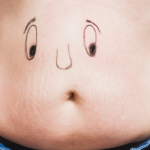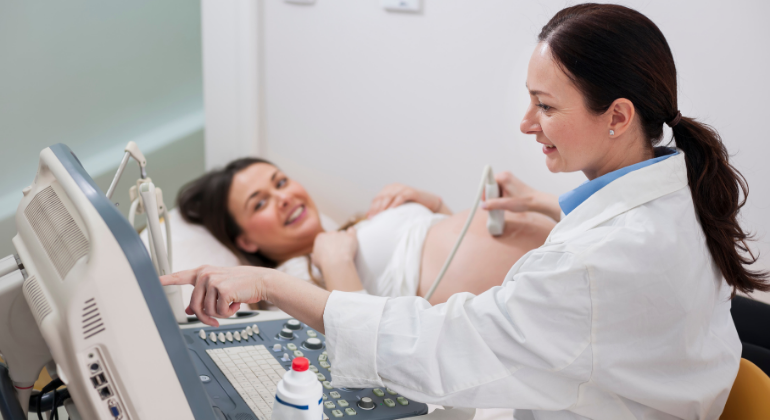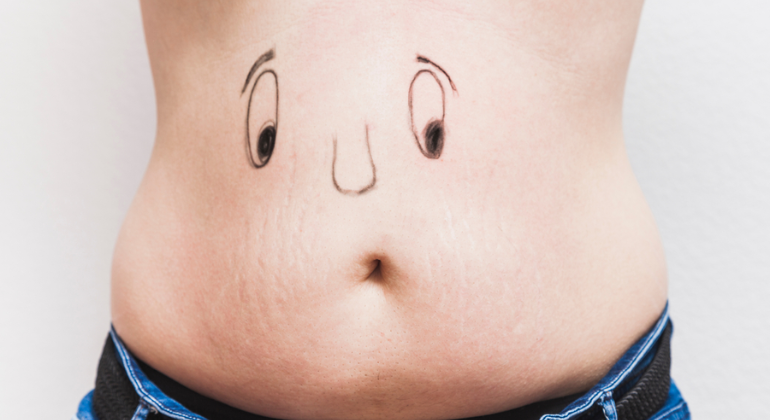Many people struggle with persistent stomach discomfort, bloating, indigestion, or unexplained weakness in their core muscles without realizing that the root cause could be navel misalignment—a condition where the belly button shifts from its natural position. Known as navel displacement or nabhi dislocation, this issue can affect digestion, muscle function, posture, and overall health.
Because its symptoms often mimic common digestive disorders or muscular imbalances, navel misalignment is frequently overlooked. Many individuals dismiss the discomfort, assuming it will resolve on its own. However, neglecting this condition can lead to chronic pain, digestive disturbances, and long-term complications.
If you’ve been experiencing ongoing stomach issues or core weakness with no clear explanation, it’s important to check whether your navel is out of alignment. This guide will help you identify the signs, understand possible causes, and learn simple methods to check for navel displacement. We’ll also explore effective ways to correct and prevent this condition naturally. Keep reading to take charge of your health and restore balance to your body!
Signs of Navel Dislocation
A displaced navel may not always be visible, but it often causes digestive issues, muscle weakness, and discomfort. Here are some key signs of navel dislocation that can help you identify the condition:
1. Persistent Abdominal Pain
- Pain around the belly button, lower abdomen, or sides of the stomach.
- A pulling or stretching sensation in the stomach that doesn’t go away.
- Pain that worsens after eating, exercising, bending, or lifting.
What You Can Do:
Try pressing gently around the navel area. If you feel uneven tightness or localized pain, it could indicate navel displacement.
2. Bloating and Excessive Gas
- Feeling bloated even after eating small meals.
- Frequent burping, gas buildup, and indigestion.
- A sensation of heaviness in the stomach that lasts for hours.
What You Can Do:
Monitor when bloating occurs. If you frequently feel uncomfortable even after light meals, navel displacement might be affecting your digestion.
3. Irregular Bowel Movements
- Alternating between constipation and diarrhea.
- Feeling like you need to go to the toilet but struggling to pass stools.
- Unusual stomach discomfort before or after bowel movements.
What You Can Do:
If your bowel movements fluctuate frequently and are accompanied by abdominal pain, a misaligned navel could be affecting your intestinal health.
4. A Shifted Belly Button (Visible Misalignment)
- Your belly button looks slightly off-center when you stand straight.
- One side of your stomach appears swollen or harder than the other.
- The belly button feels higher or lower than usual when lying down.
What You Can Do:
Look at your belly button’s position in a mirror. If it appears uneven or different from its usual placement, it may indicate navel displacement.
5. Weak Core Muscles & Loss of Strength
- Difficulty in bending, stretching, or lifting objects.
- A noticeable loss of lower abdominal strength.
- A feeling of imbalance while standing or sitting for long periods.
What You Can Do:
If simple activities like twisting, bending, or even walking feel uncomfortable, it may be due to navel displacement affecting core stability.
Symptoms of Navel Dislocation in Adults

Navel displacement is more common in adults than people realize, especially in those who perform sudden movements, heavy lifting, or have weak abdominal muscles.
1. Chronic Abdominal Discomfort
- A tight pulling sensation around the belly button.
- Sudden pain when standing, sitting, or changing positions.
- Pain that comes and goes without any clear reason.
2. Frequent Digestive Issues
- Acid reflux, heartburn, and slow digestion.
- A feeling of fullness even after eating light meals.
- Recurring stomach aches with no dietary changes.
3. Unexplained Fatigue and Weakness
- Feeling tired even after resting properly.
- A sense of heaviness in the abdominal region.
- A feeling of drained energy after minimal physical activity.
4. Lower Back Pain and Postural Imbalance
- Sudden back pain without injury.
- A noticeable tilt in posture when standing or walking.
- Pain that increases after prolonged sitting or standing.
5. Difficulty Engaging Core Muscles
- Struggling with basic core exercises or stretching movements.
- A weak feeling in the stomach when getting up from bed.
- A sensation of tightness in the lower abdomen when breathing deeply.
What You Can Do: If multiple symptoms persist together, try a self-test for navel displacement to confirm misalignment.
How to Check if Navel is Displaced

If you suspect navel displacement, you can perform a simple self-test at home to check for misalignment.
Self-Check Method for Navel Dislocation:
- Lie flat on your back on a firm surface like a yoga mat.
- Relax your stomach muscles and take slow, deep breaths.
- Gently place your fingers on your belly button and feel for any irregularities.
- Observe whether your navel is positioned higher or lower than usual.
- Press lightly around the belly button—if there’s discomfort in a specific area, misalignment may be present.
Additional Test: Ask someone to mark the center of your navel while lying down. Stand up and check if the navel position appears different—if so, displacement is possible.
Causes of Navel Displacement
1. Heavy Lifting or Sudden Physical Movements
- Carrying heavy objects without proper posture.
- Abrupt twisting, bending, or stretching movements.
- Engaging in strenuous exercises without core stability.
2. Weak Abdominal Muscles
- Lack of regular core workouts.
- Post-pregnancy abdominal muscle weakness.
- Diastasis recti (abdominal muscle separation).
3. Chronic Digestive Issues
- Frequent constipation and bloating creating excess pressure.
- Excessive gas buildup leading to stomach tightness.
- Poor digestion weakening the abdominal area.
4. Stress and Anxiety
- High stress tightens stomach muscles, increasing the risk of displacement.
- Emotional stress affects gut health and digestion, worsening symptoms.
5. Previous Abdominal Injuries or Surgeries
- Past abdominal injuries causing weak muscles.
- C-sections or abdominal surgeries leading to higher risk of displacement.
Final Thoughts
Recognizing navel displacement early is key to preventing chronic pain, digestive discomfort, and posture problems. If you frequently experience bloating, stomach pain, or an off-center belly button, consider checking for navel misalignment.
By understanding the signs, symptoms, and causes, you can take proactive steps to correct the issue naturally. If symptoms persist or worsen, consider seeking help from a physiotherapist, chiropractor, or Ayurveda expert.
Would you like to explore natural remedies for navel displacement? Check out our health & wellness blogs for expert advice!
Recent Blog : Acidity and Navel Displacement: How They Are Connected and Ways to Fix It
Frequently Asked Questions (FAQs)
Kya navel dislocation ki wajah se chest pain ya heartburn feel ho sakta hai?
Haan, kabhi-kabhi navel misalignment se upper abdominal tightness aur acid reflux jaisa pressure feel hota hai, jo chest pain ya heartburn ke symptoms jaise lag sakte hain.
Agar aapko chest mein jalan ho aur saath hi bloating ya nabhi ke around discomfort hai, toh navel displacement check karna zaroori hai.
Nabhi ka hatna aur weight loss ya weight gain ka koi connection hai kya?
Directly nahi, lekin navel displacement digestion aur nutrient absorption ko affect karta hai, jisse aapko weakness, fatigue, ya appetite loss ho sakta hai. Long-term mein ye unexplained weight loss ya unhealthy weight gain ka reason ban sakta hai.
Kya navel dislocation ko permanent cure kiya ja sakta hai?
Haan, agar aap core muscles ko strong banayein, digestion sahi rakhein aur heavy lifting se savdhaani bartein, toh nabhi ka fir se hatna roka ja sakta hai.
✔ Yoga, ✔ massage, aur ✔ posture correction se long-term solution milta hai.
Bacchon mein bhi nabhi dislocation ho sakta hai kya?
Bilkul. Sudden jumping, girna, ya galat tareeke se heavy school bag uthana bacchon mein nabhi dislocation ka reason ban sakta hai. Agar bachcha pet dard, kabz, ya chakkar ki complain kare, toh ek baar navel position check karna chahiye.
Kya menstruation cycle pe nabhi displacement ka effect padta hai?
Haan, kai mahilayein report karti hain ki irregular periods, pelvic cramps, ya lower abdominal pressure unka nabhi dislocate hone ke baad zyada hota hai.
Yeh direct hormonal issue nahi hai, lekin core imbalance menstrual discomfort ko badha sakta hai.







